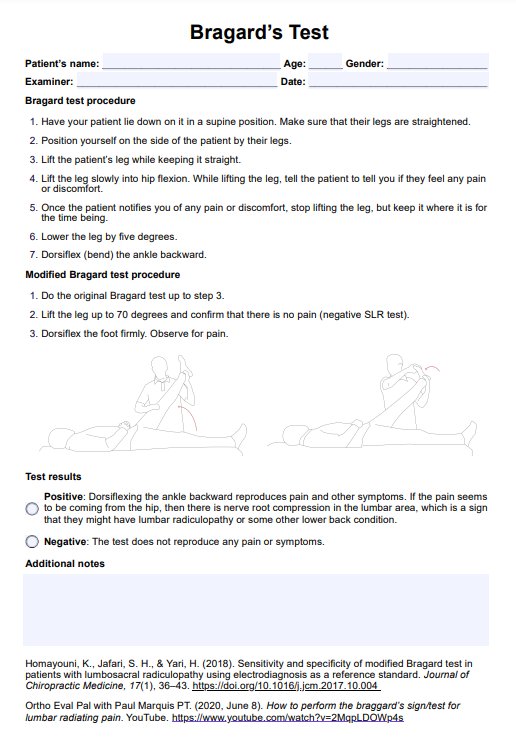A positive straight leg raise test typically indicates irritation or compression of the lumbar or sacral nerve roots, often associated with conditions such as lumbar radiculopathy, herniated discs, or sciatic nerve irritation. The test reproduces pain that radiates down the leg, helping clinicians identify the source of the patient's symptoms.

Bragard’s Test
Conduct the Bragard's Test to assess whether lower back pain is caused by nerve root compression. Use our template for quick and consistent testing.
Bragard’s Test Template
Commonly asked questions
The Bragard Test is a clinical provocative test used to assess lumbar nerve root compression or irritation. It involves raising the patient’s straightened leg to the point of pain, lowering it slightly, and then dorsiflexing the foot to see if this reproduces the patient’s symptoms. Additionally, it helps differentiate true nerve-related pain from false positive Lasegue signs.
The Bragard Test is significant because it provides a simple and non-invasive way to identify nerve root compression or irritation, such as in cases of lumbar radiculopathy. It helps differentiate true nerve-related pain from other sources and supports early detection, guiding the need for further diagnostic evaluation or treatment.
EHR and practice management software
Get started for free
*No credit card required
Free
$0/usd
Unlimited clients
Telehealth
1GB of storage
Client portal text
Automated billing and online payments











